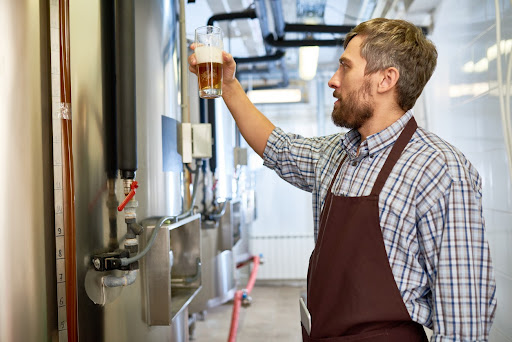Running a profitable craft brewery involves more than just knowing how to make good beer. True, you need to skillfully combine ingredients in a creative way to produce a distinctive brew that appeals to beer lovers. But you also need to sell it at a price that generates enough revenue to more than cover your costs. With everything that’s going on in the world today, reviewing procedures like job costing for opportunities to increase efficiency, maximize productivity and profit, and minimize costs has become more essential. If you don’t know what those costs are, it will be difficult to know how much revenue you’ll need to be profitable. This is where job costing can help.
Calculating job costs
For breweries, job costing involves tracking three types of costs for producing a batch of beer (the “job”), typically expressed in terms of cost per barrel:
- Materials. These include malt, hops, water, and other ingredients or supplies, as well as any barrels, cans, or bottles used to age or package the beer.
- Direct labor. This category includes the costs of workers directly involved in brewing, fermenting, and packaging the beer.
- Overhead. These costs consist of everything else that goes into producing the beer, including rent or mortgage, utilities, insurance, equipment, depreciation, licensing, taxes, quality control, management, administration, marketing, sales, and distribution — all prorated for the batch.
Determining costs per batch for materials is relatively straightforward. You know the types and amounts of ingredients to produce a certain amount of beer – say 10 barrels – for a specific recipe, so you just multiply the quantity of each ingredient by its price and sum the results. For labor costs, you can have each of the workers involved in brewing and packaging the beer record the time spent on a batch. Then multiply each worker’s time by their respective hourly wage and benefits rates, and sum those results.
Calculating overhead costs per batch is trickier because of all the factors involved. One way to do this is to determine your total monthly overhead costs and your total monthly production in barrels for a typical month (you can also do this on an annual basis). You can then divide those costs by the number of barrels produced to get overhead costs per barrel. Applying this rate to the number of barrels in a batch will give you an estimate of the overhead costs for it. By summing together the materials, labor, and overhead costs for the batch, you’ll get total job costs for it.
Using job costs
By using job costing, you can track changes in costs at the micro level, so you can adjust at the macro level before taking a loss. Job costs are helpful for several purposes:
- You’ll be able to tell how the production costs of various beer recipes differ. For example, producing 10 barrels of a lager may cost 15% more than 10 barrels of an ale. And recipes with coffee, chocolate, or special malts may cost even more.
- You can evaluate the production costs of each recipe against their respective sales to determine if there are recipes you should produce more of or recipes you should consider no longer producing.
- If you track costs for each batch, you’ll be able to determine whether the costs are staying consistent, and if not, where they are changing and why, such as changes in the prices of materials.
- You can account for things like increases in suppliers’ pricing or COVID-19 related costs.
- You can estimate the costs of increasing production and when you may need to add workers or equipment.
- You’ll have a basis for pricing your beer.
This last use of job costs is especially important because pricing drives revenue, and revenue is essential to profit. In an ideal world, you would take your costs and simply add your desired profit margin to set the price. But in the real world, you’ll have to consider competitors’ prices, distributor and retailer markups, losses to theft, damage, or waste, and whether you want to focus on taproom, wholesale, or retail sales. You’ll also have to consider what types of beer your market prefers and what types can distinguish you from competitors. Especially with the way the market, consumer behavior, and business operations are changing day-to-day since the onset of COVID-19.
We’re here to help
Determining and tracking all the costs involved in brewing craft beer can be a formidable task, especially for startups and small breweries. This is where ARB’s Craft Beverage Advisory Services Team can help. My team knows the brewing industry and serves a number of craft breweries in the Northeast. We can help you determine costs, set prices, and make decisions about financing, equipment, facilities, and resources that will help you achieve the bottom-line results you desire. We can also advise you about operations and inventory control software, suggest tax-minimization strategies, and handle all the accounting tasks involved in running a brewery.
Contact me and let me know how I can be of assistance. I would welcome the opportunity to help you make not only good beer, but also good money.
Visit our COVID-19 Financial Resource and Tax Center for additional information on related matters, and check out what else we’re saying about the craft beverage industry.
by Matthew Pore, CPA
Matt Pore is a principal at ARB and works extensively with breweries, closely-held businesses, private clients & family offices, and automotive dealerships. As the Practice Leader of ARB’s Craft Beverage Advisory Services Team, Matt advises craft beverage companies throughout New England on tax planning & compliance, M&A transactions, inventory costing, and more. He has spoken at the New England Craft Brew Summit about R&D tax credits, FICA tip credits, entity selection, and CapEx considerations and has published several articles about R&D tax incentives for breweries.





